Considering representation and intent in my making around the form of the veiled mushroom
Painting a mushroom using the organic form I made with foam as an inspiration developed out of ideas after looking at the potential of paint to create the form as well as surface (Part Four of the course material). I would like to make use of the ideas from the Veiled mushroom and create a net shape around it. These mushrooms are called Phallus indusiatus, and are commonly known as bridal veil stinkhorns, veiled ladies, or long-net stinkhorns.
I could look at only exploring the white cellular structure, which does not need the fungi behind it – I can explore it as a type of layer that we as humans share with the fungal world. As is, it can be seen as over-explaining itself – the literal. Grabbing hold of it materially, explore it materially. The white structure can be explored – it is in all of us. I should think of an alliance here, trusting myself with this and doing the work. I start looking at how my ideas around this structure developed in this project.
I considered agency and am reminded of how these drawings/paintings and 3d shapes drew visual feedback so as to look phallic. Looking at the name of the veiled mushroom, Phallus indusiatus, it is clear how it came to get this name, and in a way, I acted with this in my own making which lead to different meanings of the work, which can even contain ideas around gender identity. Below is the first image which can be seen as a stand-in and how I find a relationship with materiality. I am very aware of the phallic structure and continue to explore this as the support of the veil as explorative drawings and visualising an ‘upscaled’ mushroom. The drawing Fig. 3 reminds of a swing at a fair.
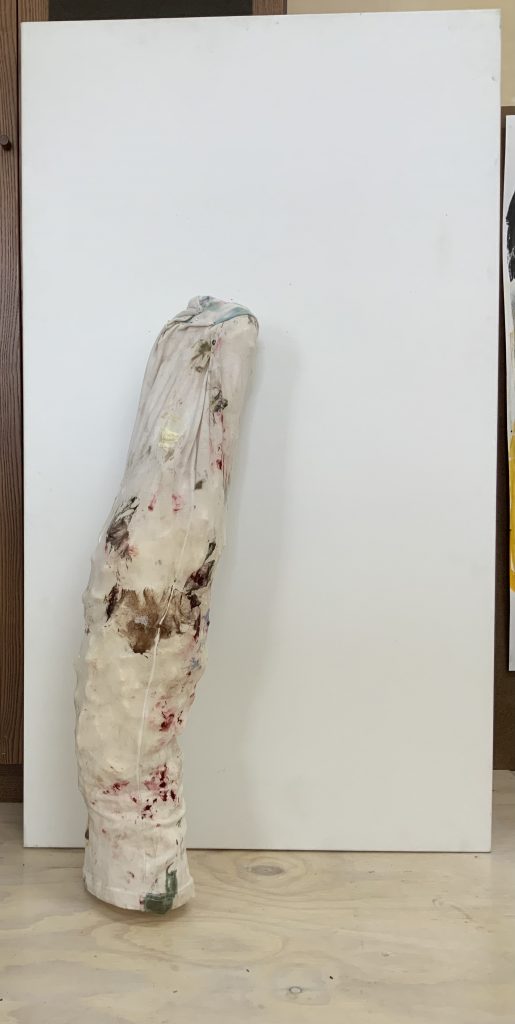
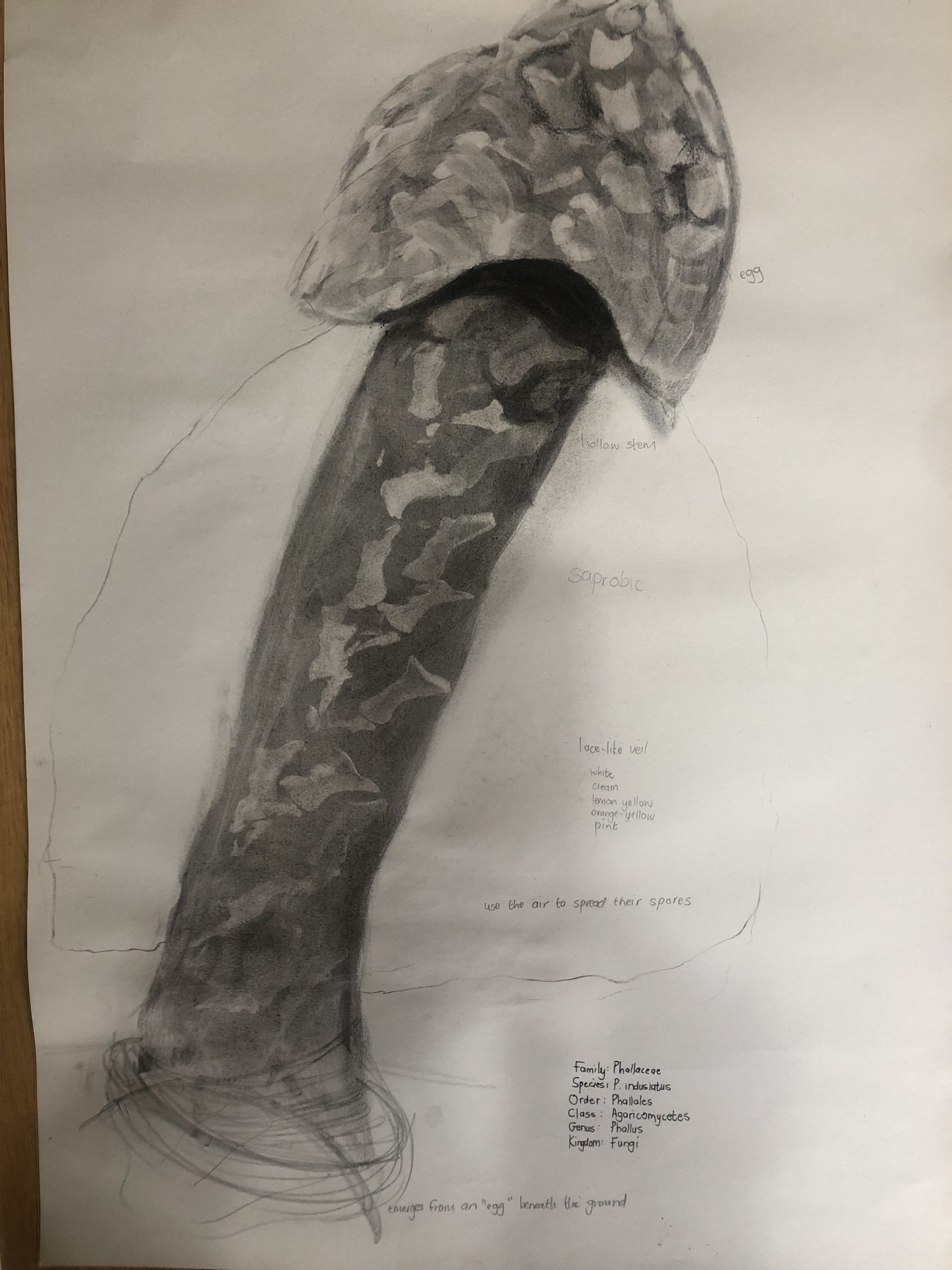
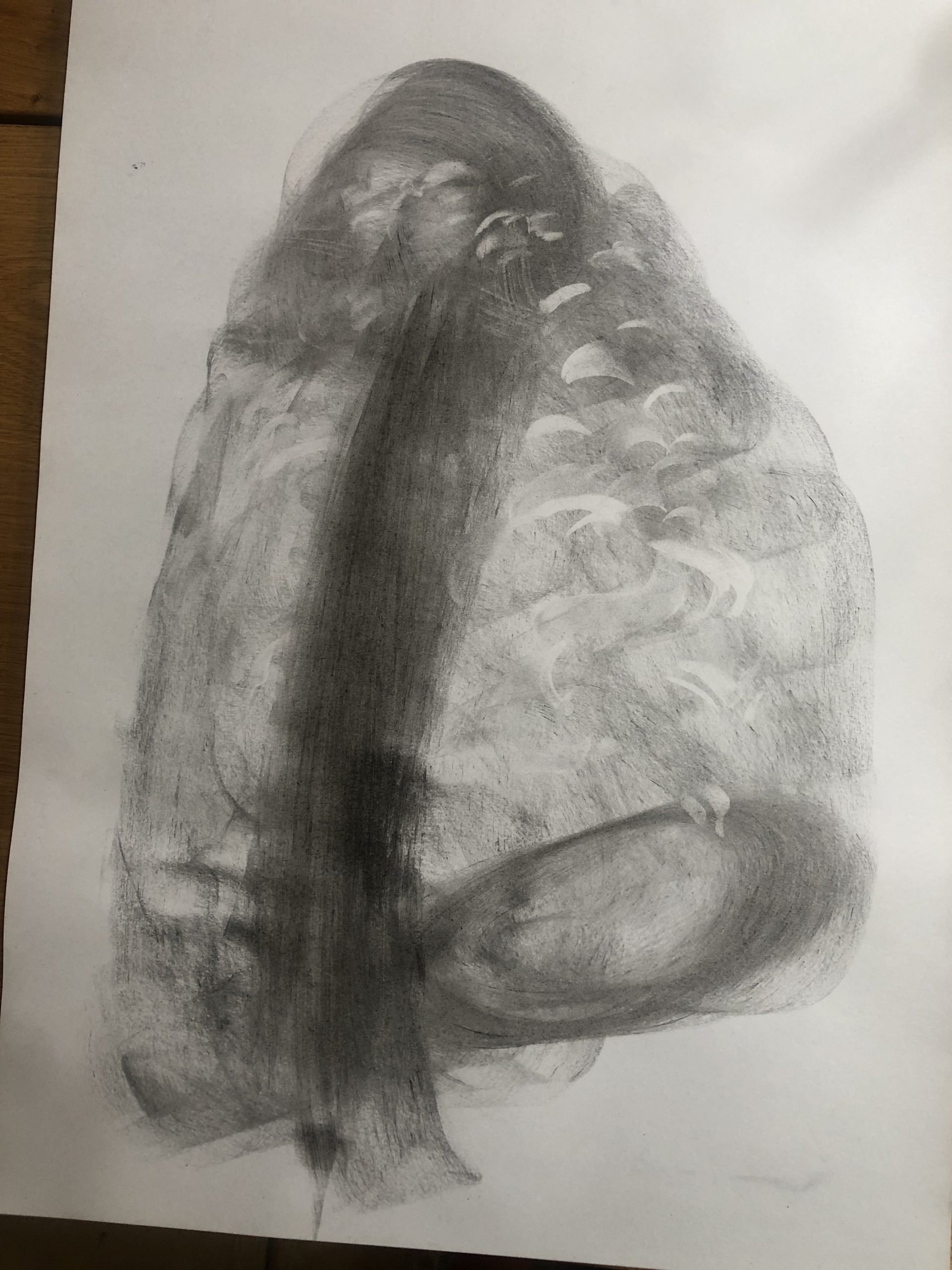
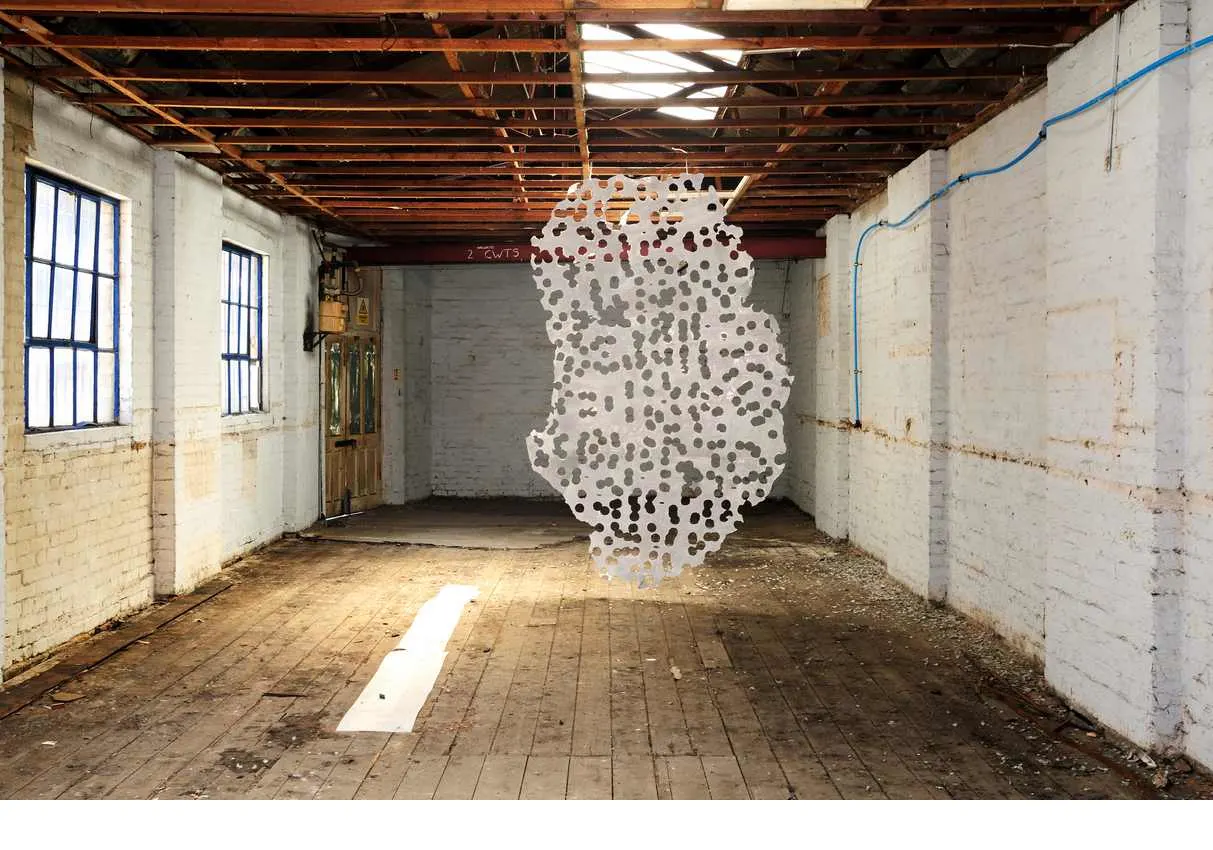
In Chapter 5 of Entangled Life (p164) Sheldrake talks about where the person’s self begins and relates this to the mycorrhizal networks, which he writes, ‘that lace outward – extravagantly – from its roots to the soil’. Bringing this idea visually to mind is what influenced most of my making around this idea of a veil. In my study material, I went back to a reflective exercise (Part Four of Project Three) where I considered relationships with materiality. I think the veiled effect of the mushroom when I look at images, relates to the way mycelial networks form as well as to my feeling of learning and so much that must still be revealed or hidden. I also think the veil reminds me of woven threads, an organic life forms, it is tactile and fragile – how the mushroom feeds above the ground. I read that these veils grow out during the night and that it takes up to 10 -15 hours to fully unfold. The skirt’s length ranges from 7 -25 cm and reaches the ground. I read that the bridal veil stinkhorn is an edible mushroom, but that the yellow bridal stinkhorn is considered poisonous, some people even get dizzy by just smelling them! To spread its spores, the cap of the bridal veil stinkhorn contains a gelatinous gleba that attracts insects. The spores latch onto the insects as they touch the gleba and are carried away to other places.
I want to consider the influence of Cy Twombly in this work process. I feel it is important to explore how he worked with a line which moves between being cursive, then containing some mathematical notations, working with wax crayons, pencils, ink and adhesive tape to create something that evolves or grows into more or less. Some people would argue that his early work was a reaction to Pollock’s drip paintings and that he ‘violenced the use of graffito’. On the Gagosian website, I took a screenshot of how this work, Treatise on the Veil was installed inside the gallery. The studies form a coherent narrative and visual harmony, it shows some thinking, and erasure – very fluid and evolving over 5 spaces.
I start to work on a bigger sheet of compressed board and developed shapes that remind me of spores and mushrooms. I want to create a layered installation and start with a cut-out on paper and then move to velour paper. An engineer friend suggests light aluminium and I helps me to source the material.
The following work developed after a session with tutor Cheryl Huntbach on Saturday 11 June: Drawing through Repetition and Iteration. The primary focus was on drawing using repetition as a process. We started with a few timed sessions I was now very aware of the veiled mushroom becoming an iteration of rounded patterns or shapes that I wanted to explore. I erased, smudged and repeated drawing into the work, adding and or removing layers to create what I see as a complex design of layers. I enjoyed working across media. (I was introduced to American artist, Terry Winters and discuss my learning in a separate blog) I am looking at my work and explorations and feel that I am searching for shape and meaning when I do these works.
The collage below shows how my ideas developed, and although the marks or shape remind of the veiled mushrooms, it is becoming (have the potential) to become, something new.
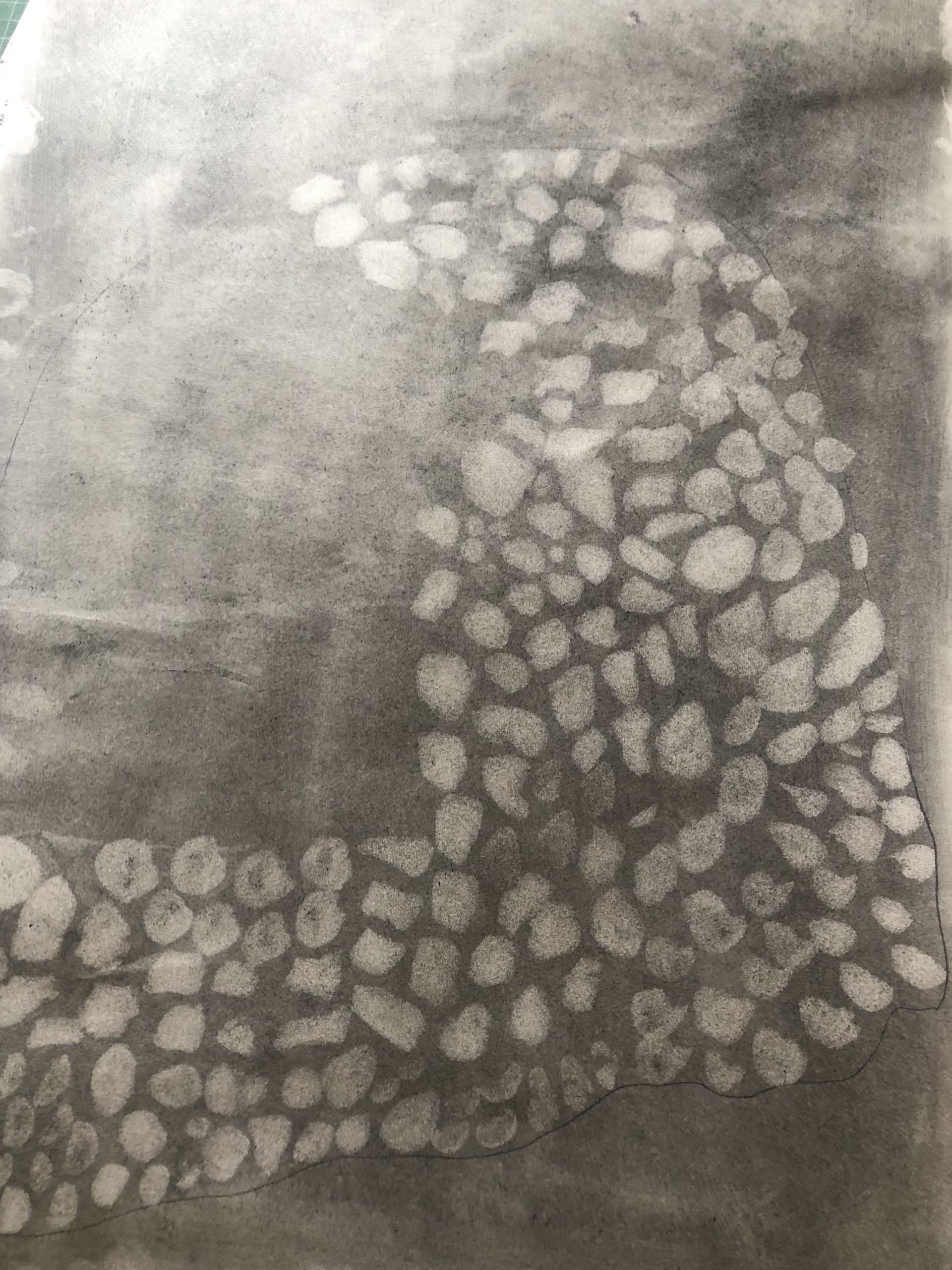
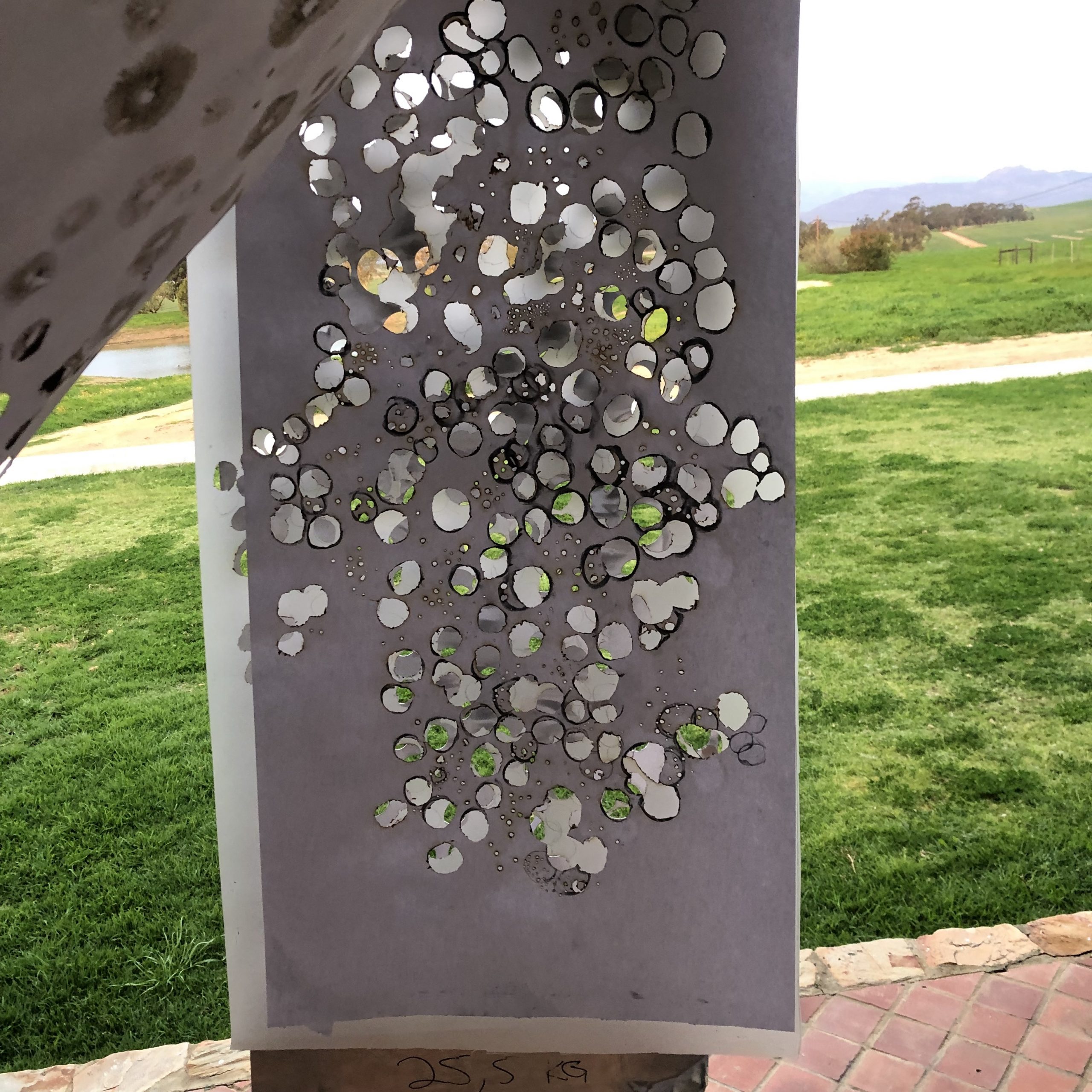
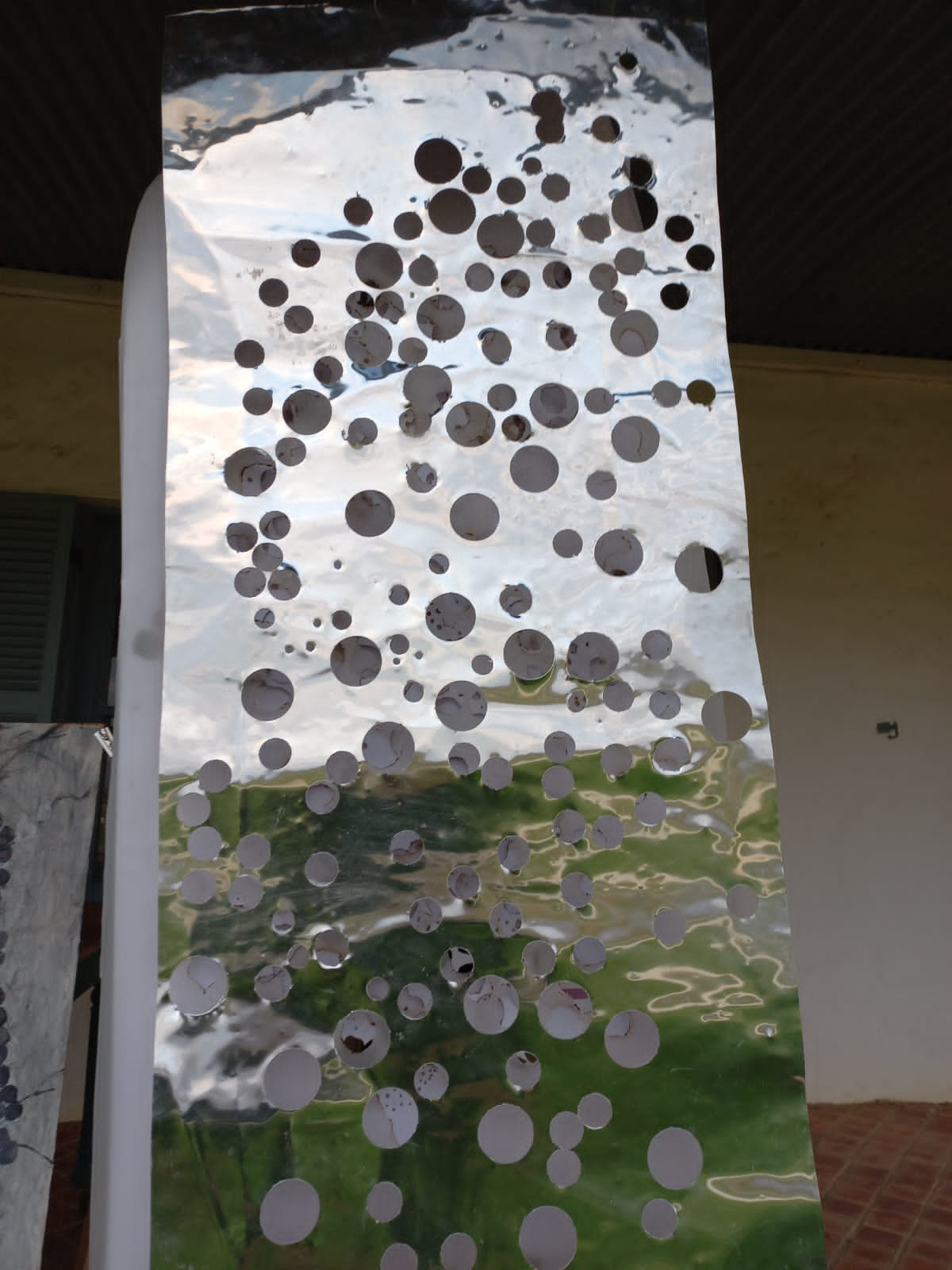
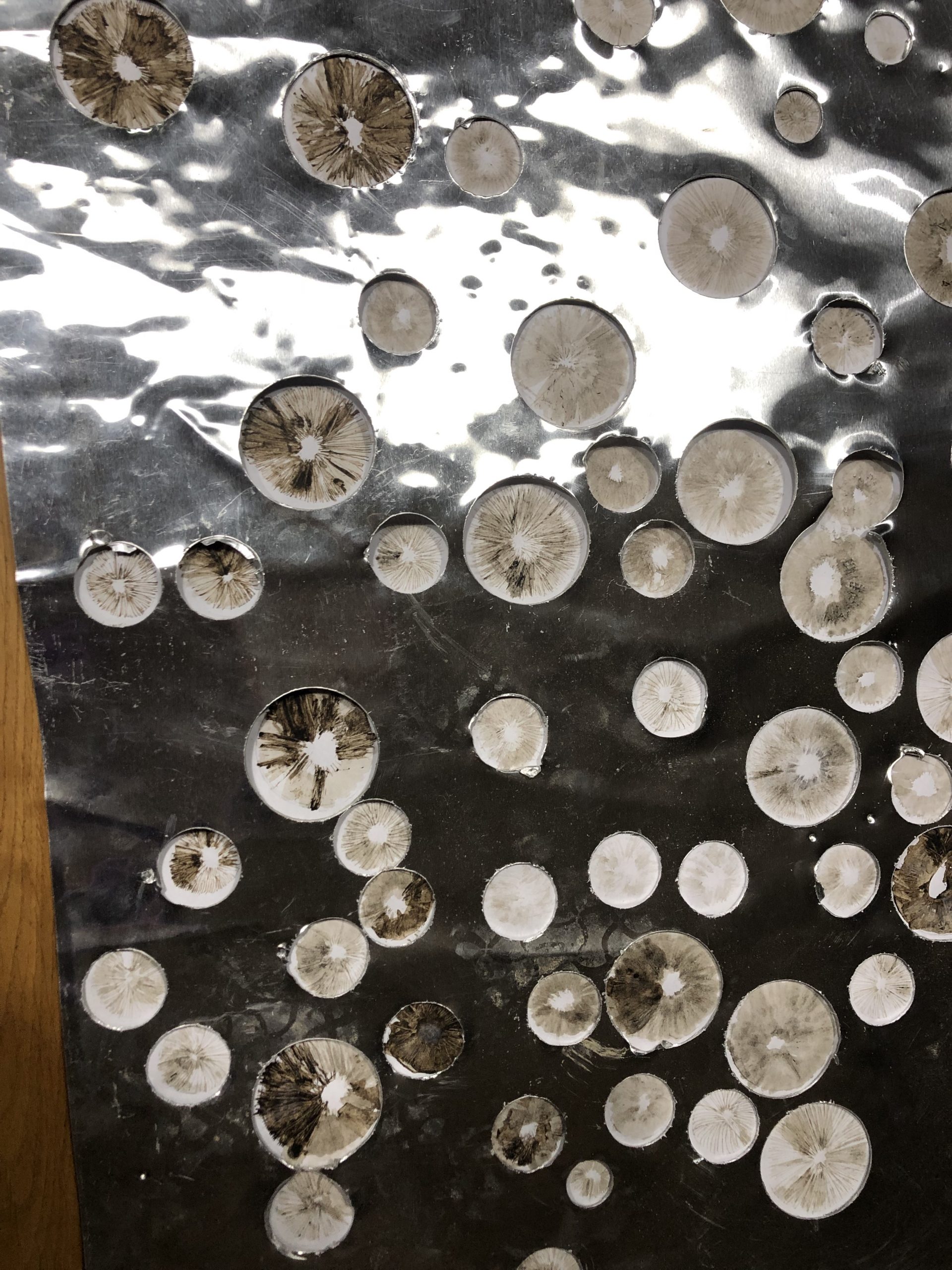

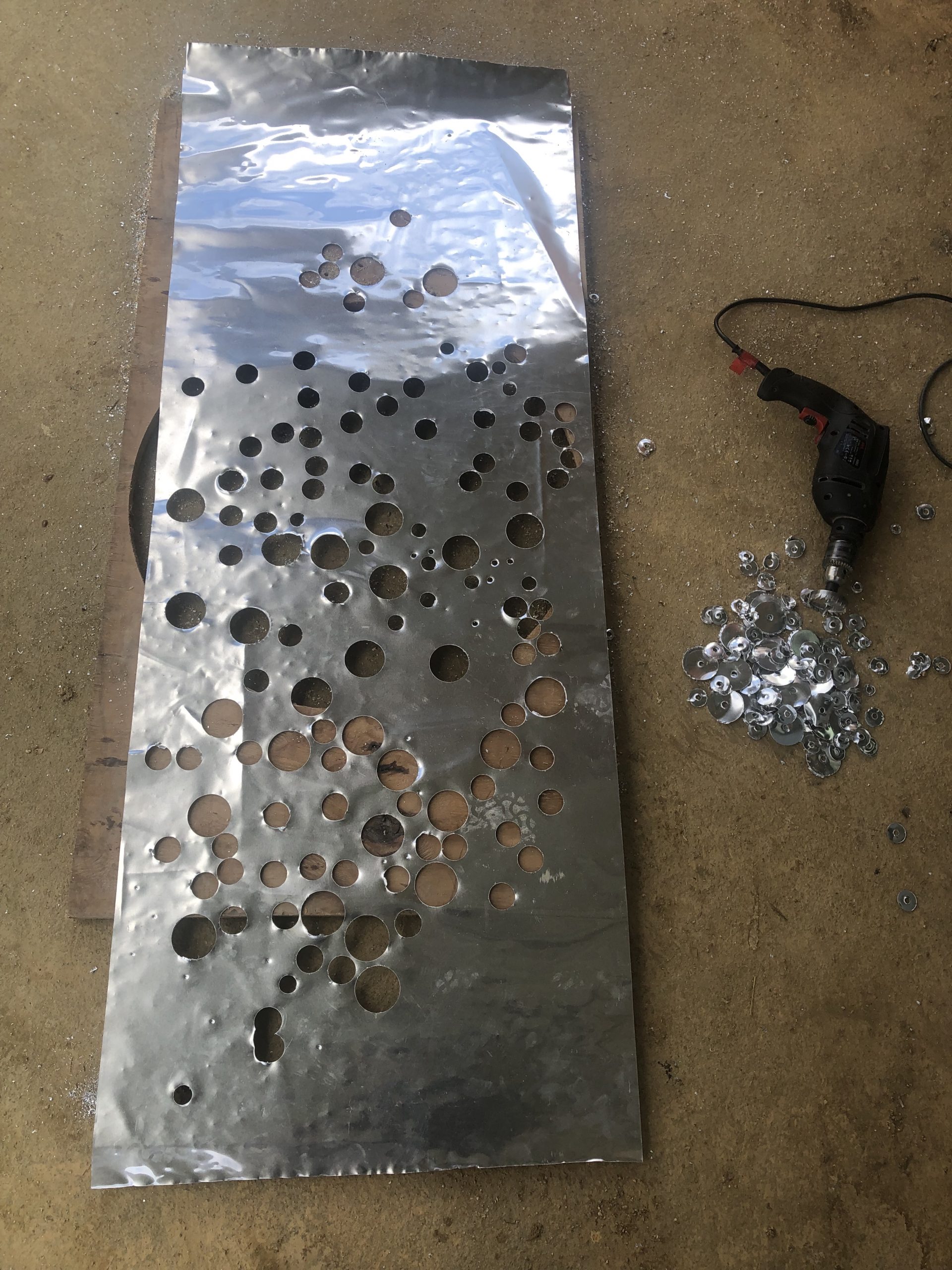
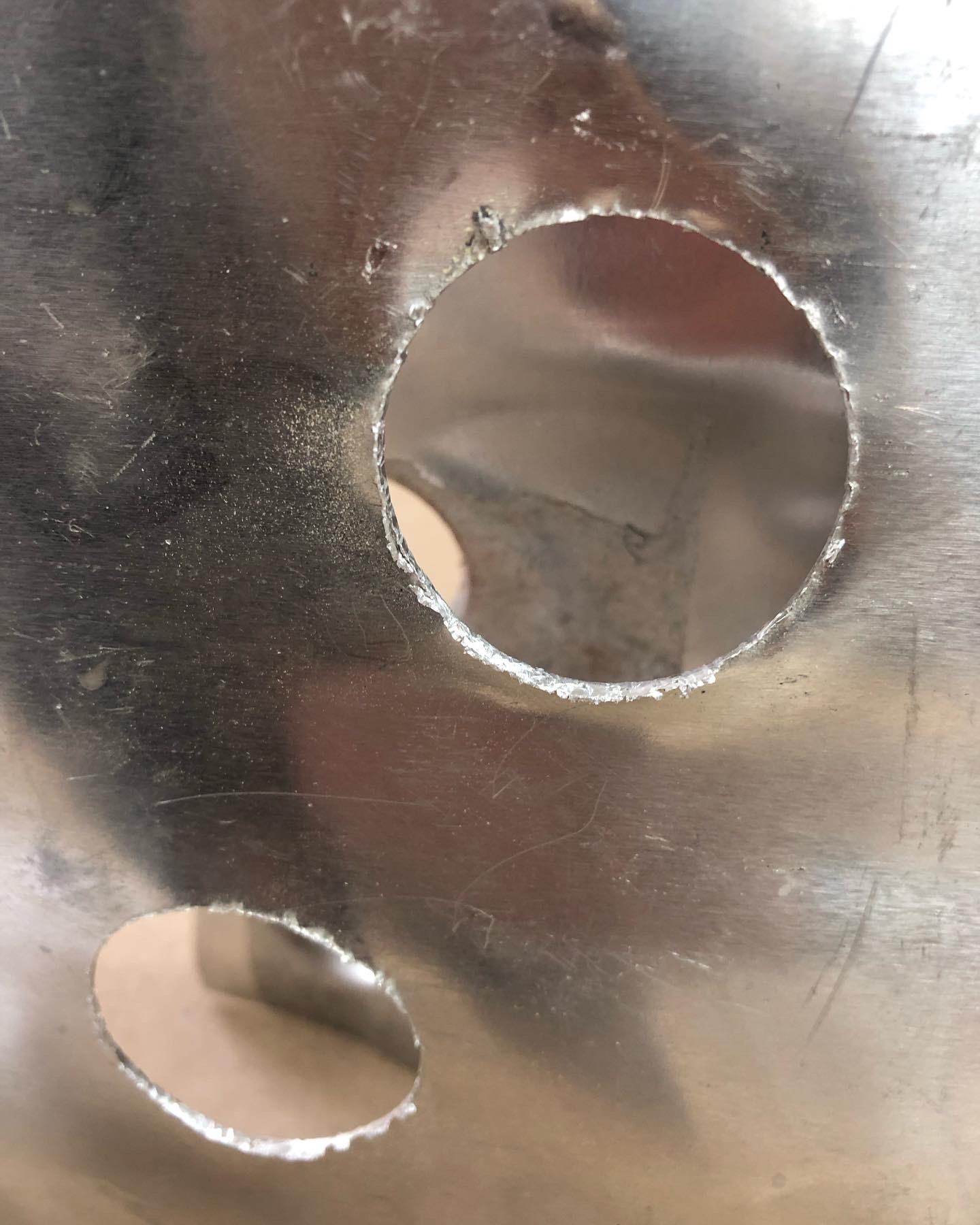
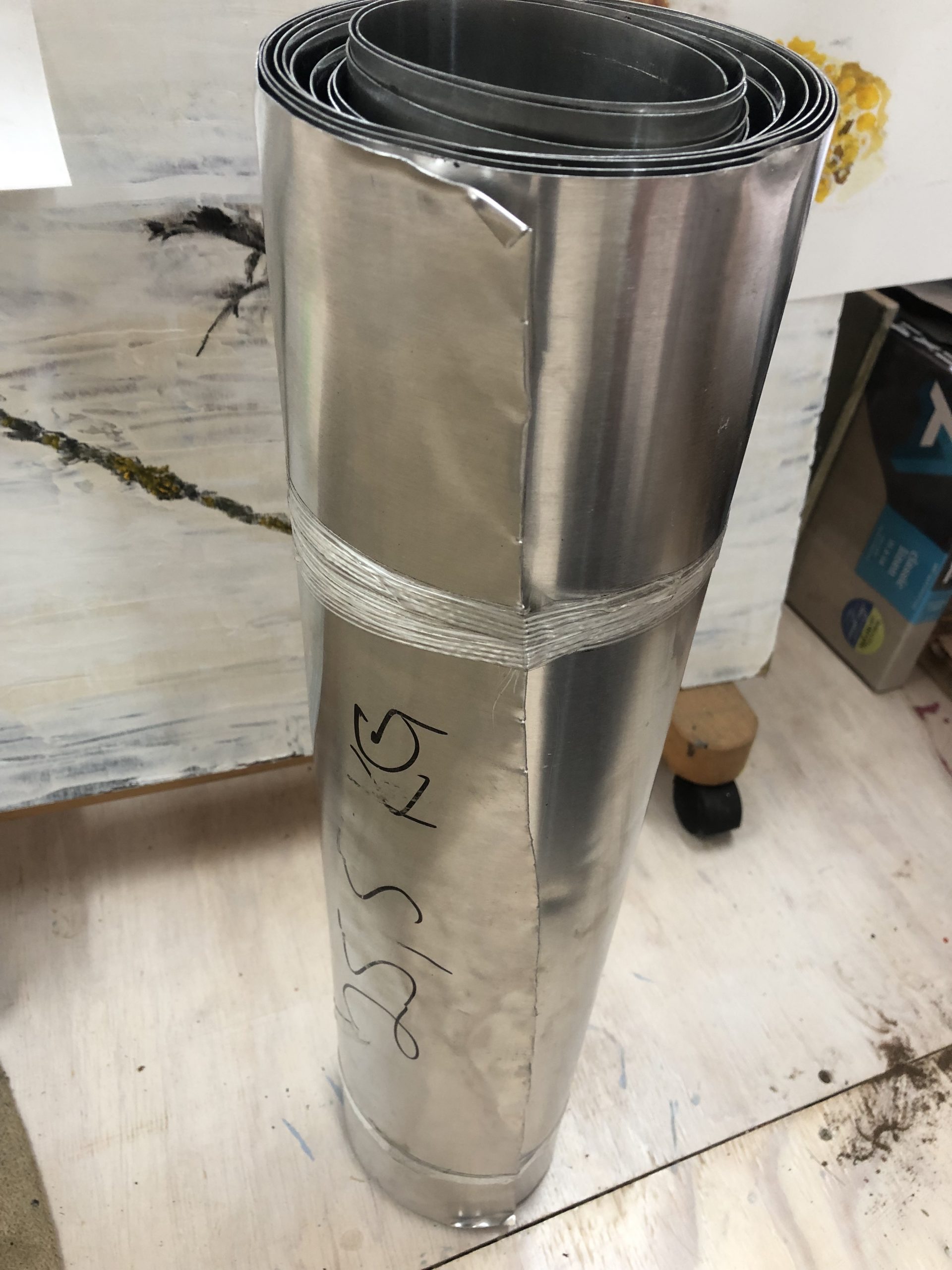
I started working with aluminium and found the material soft and malleable. It took me a whole day of working to cut the holes with an electric tool. I experimented with a few tools to cut different size holes. My sheet is around 150cm long and 60 cm wide. I feel that by cutting out the aluminium material, I am deconstructing ideas and connecting with very new material. It is tougher to work with, with sharp edges, long and floppy and I work outside. I am physically leaving traces behind – the circular cut-outs and keeping them for future use. Visually I enjoy the reflectiveness of the aluminium material – I see another layer to the idea of a veil and layering work. I can imagine how light will come to play if this work finds a suitable hanging space.
Making holes in paper followed to create more organic reflection on the form of the veil and I think the pink form I made earlier in the course talks to these objects.
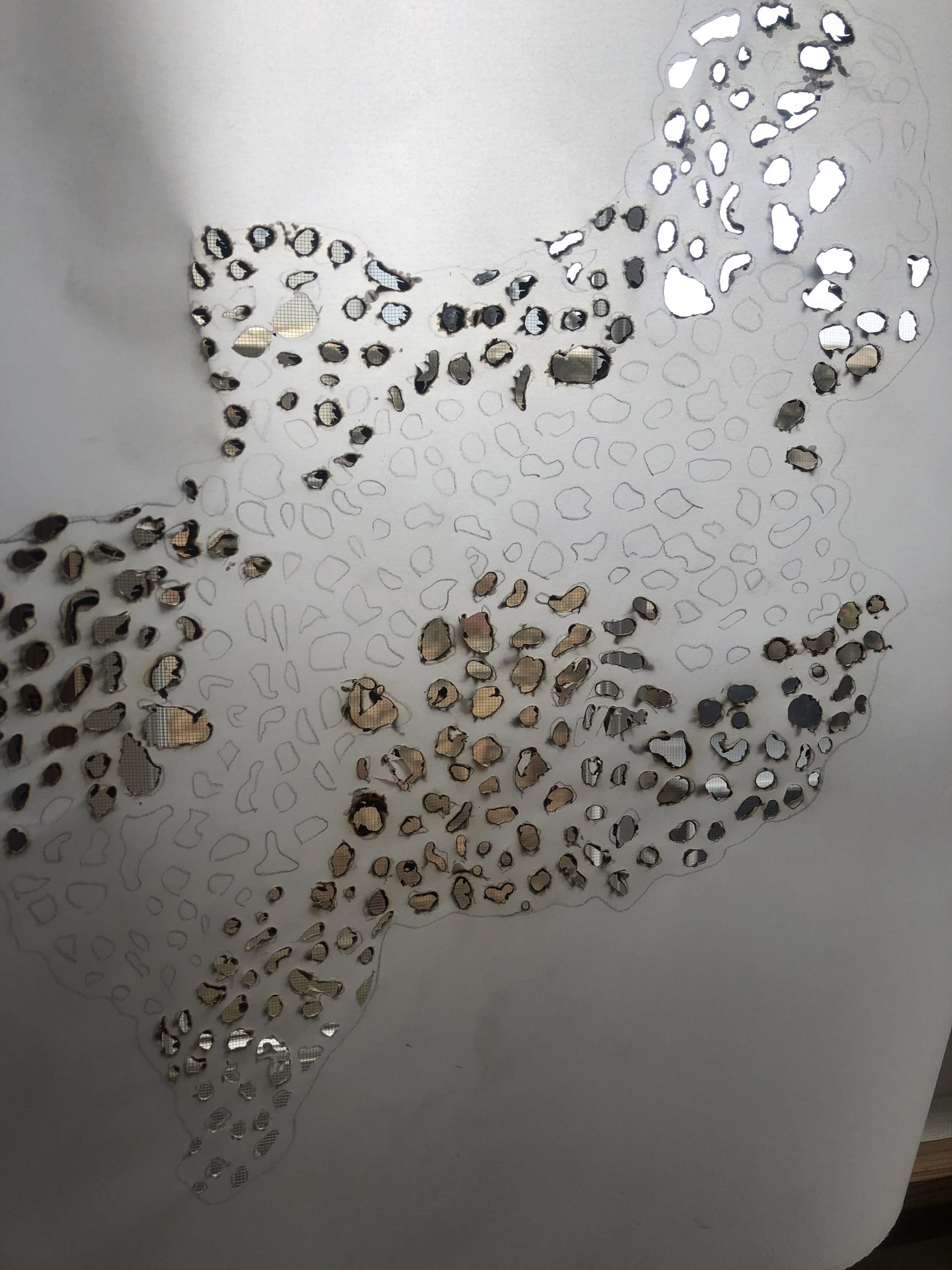
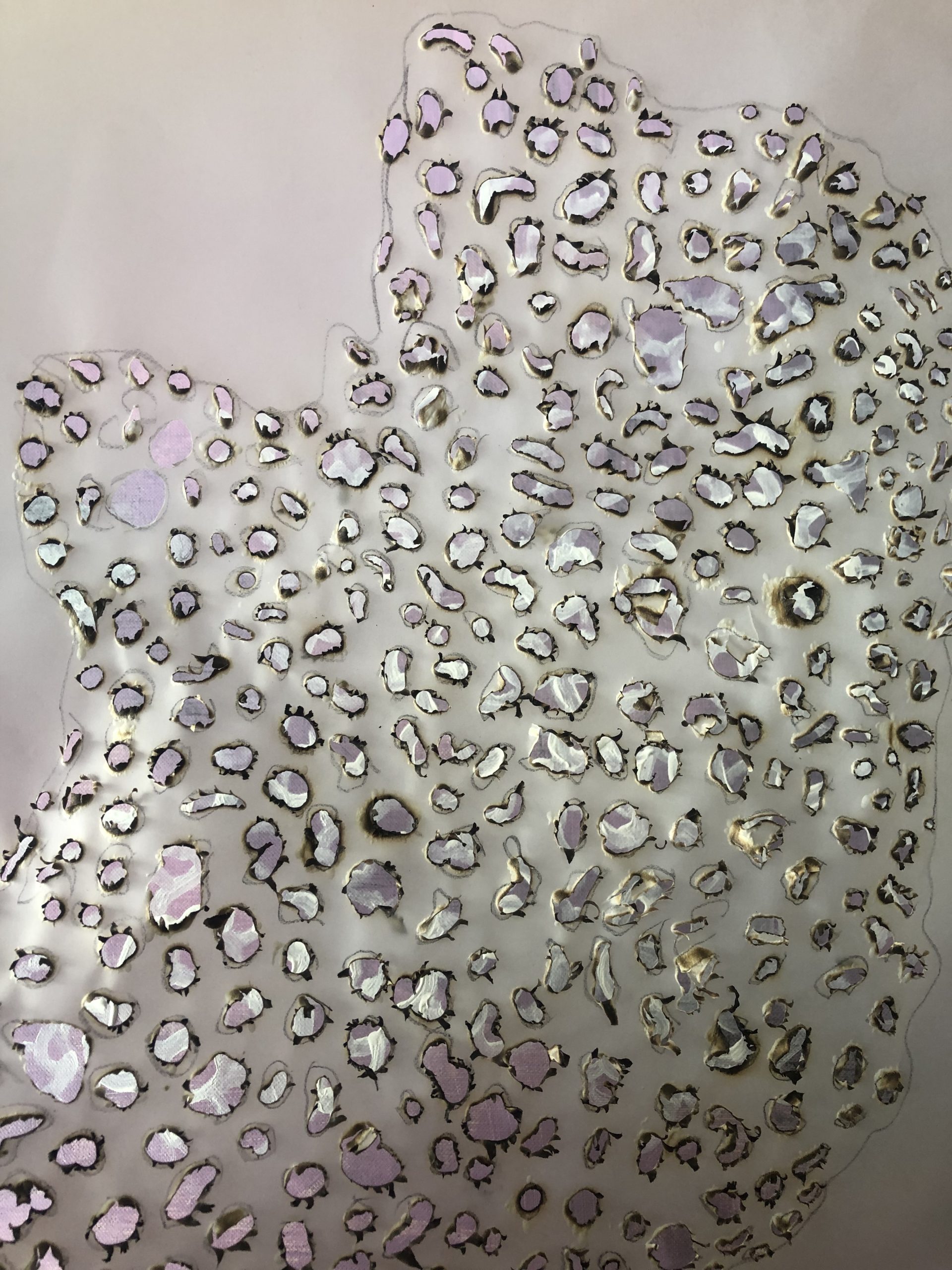
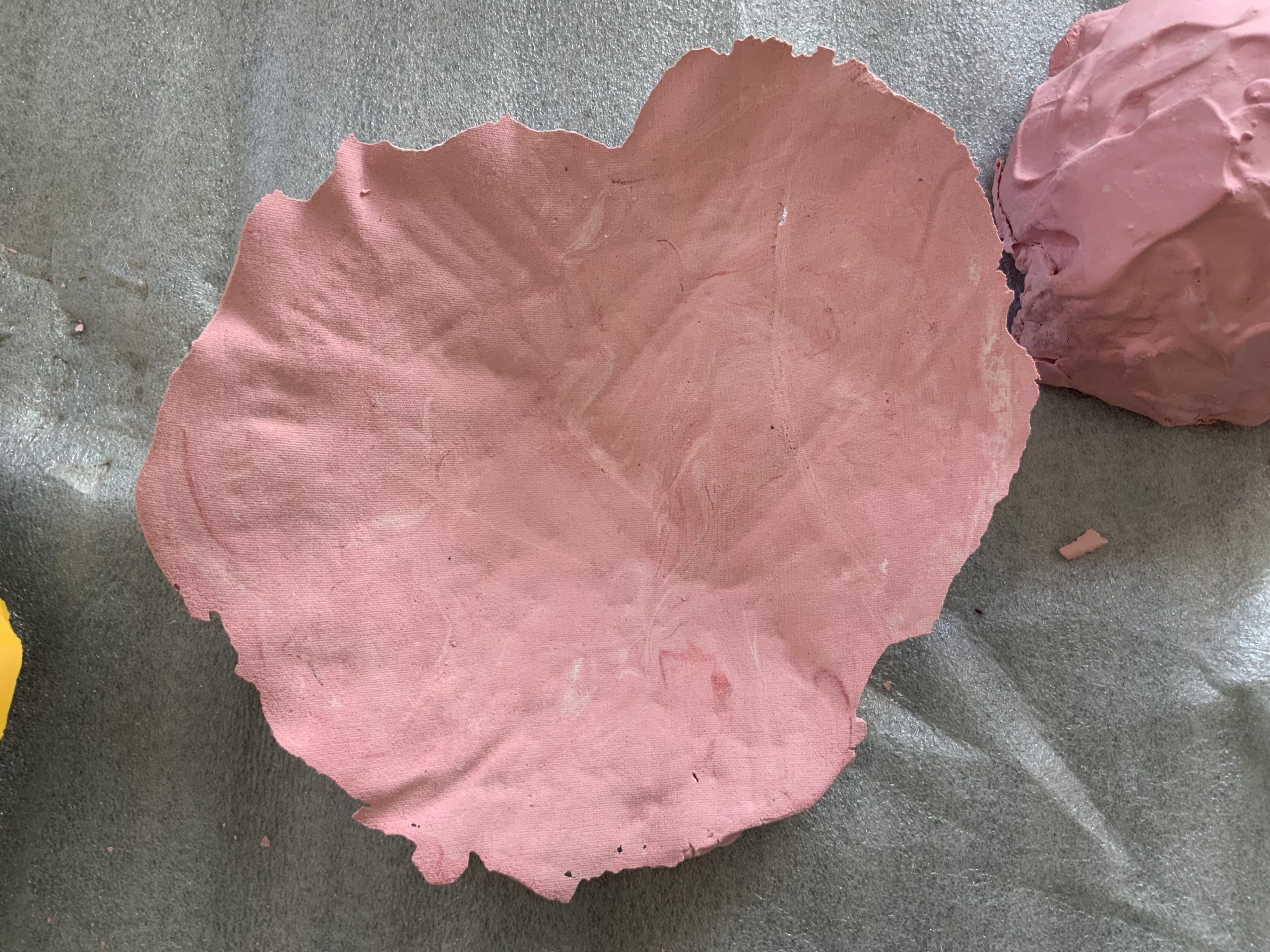
By now I know spores and the veiled form became favourite objects and forms to work with. I decide to make a painting with Coprinus mushroom ink, reflecting spores. My ink had lots of lumps in it, it caused a few mishaps on my paper as I was painting to form spores. I made use of a dipping pen and a small brush of create marks of the spores on the paper.
I enjoy the repetitive work of making both these layers and going back to thinking about how I would like this work to hang, I visit Twombly – reading more about Cy Twombly’s Treatise on the Veil.
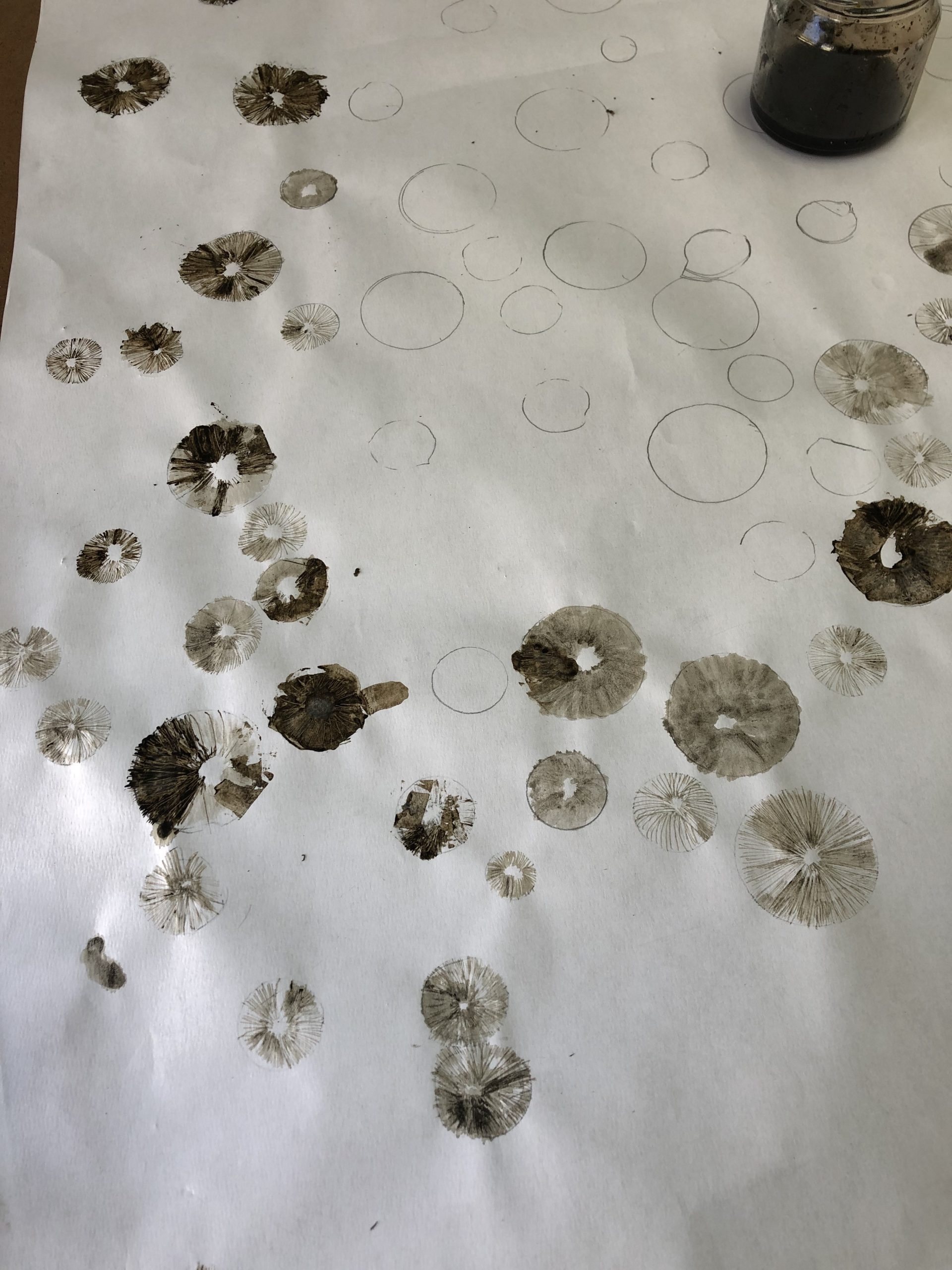
Merriam-Webster online dictionary explains treatise as follows: a systematic exposition or argument in writing including a methodical discussion of the fact and principles involved and conclusions reached.
I feel these work challenge ideas around how vertical work should hang – layers does not necessarily be layered on top of each other. I see a process of making – I remind of when one takes a photo of work over time. I do like this visual documentation of the work.
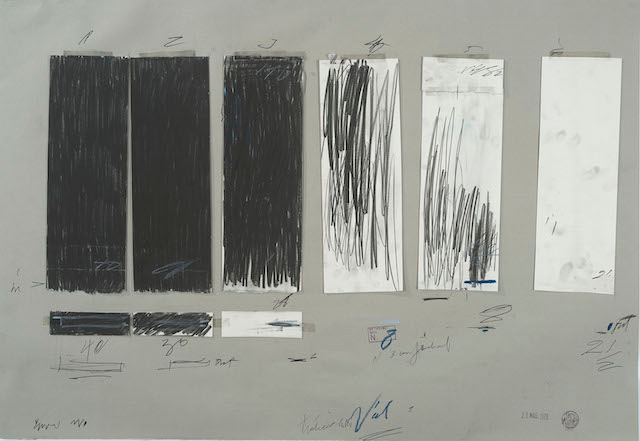
I started off thinking my work is an installation and wanted to use the idea of reflecting and looking through what I think come from the veil nor revealing everything. But here I find another form of revealing as an idea.
When his work was on display at the Morgan Library & Museum (September 26, 2014 – January 25, 2015), they present nine more drawings that he made later. (1970) He had an interesting use of a type of multi-panel painting by using scotch tape to attach five or six similarly-sized, vertical strips of paper to a larger sheet. In contrast to the painting, where the panels are abutted together, the strips are spaced apart. The larger sheets come in different colors, including cream, blue and brown. I read that there is another interpretation to his work, that it could have to do with time sequential. I do think I can understand this by looking at how the works are presented. It is almost as if he shows it in the way he would have been working on and around it.
I do like to bring this to my ideas around mushrooms and how they only show themselves for a short time, much of their living is not shown – it happens underground (under cover – like a veil covers?). The works could then carry fragments, moments of beauty and contemplation on that what was seen and shown. This is very much how I have experienced foraging, going back to the same place a day or two later, may not show any sign that there were mushrooms. I do like the idea that working opened up my thoughts about leaving traces, but also that things die and decay. This work could be seen as a meditation on time and space (duration). I would like to think of my process in this way. This work also opened up ideas to work more with revealing and layering.
I hope to research these ideas further. For now I consider the physical act of making these works by employing tools such as burning with a soldering tool and drilling into the aluminium.
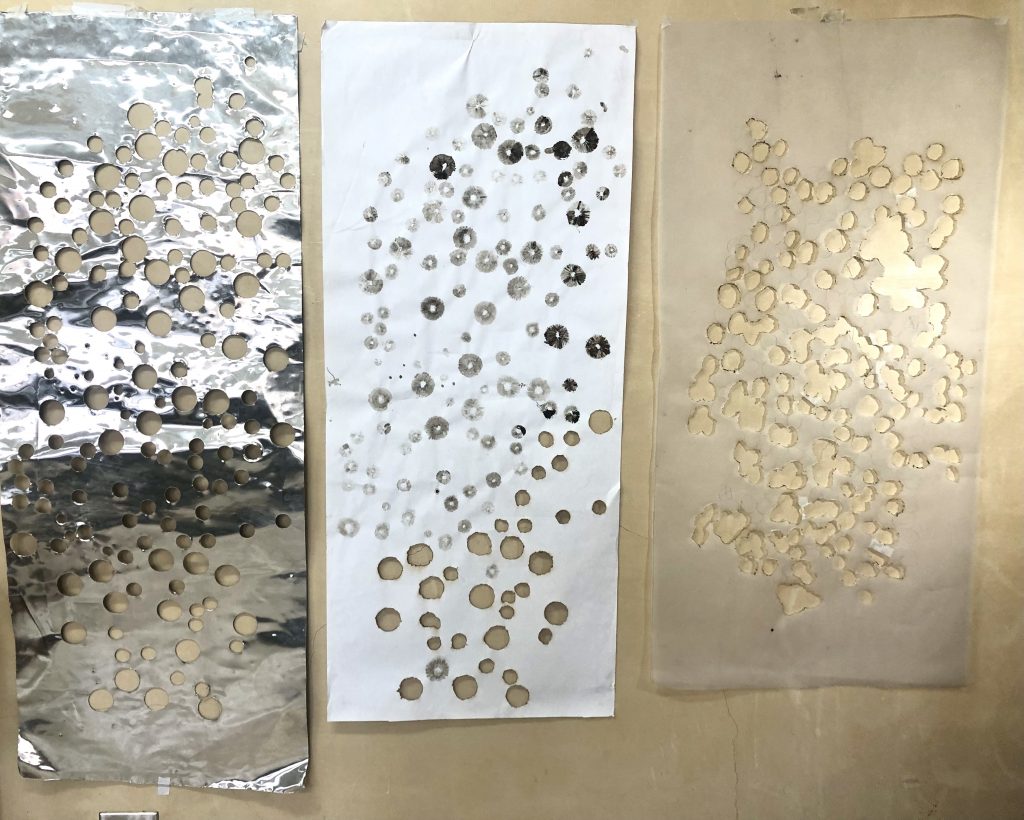
Video of work hanging outside
List of Illustrations
Fig. 1 Stander, K. (2021) Fungi foam [expansion foam, upcycled clothes and paint]In possession of: the author: Langvlei, Riebeek West.
Fig. 2 Stander, K. (2022) Phallic stem [draining on paper with eraser and charcoal] In possession of: the author: Langvlei, Riebeek West.
Fig. 3 Stander, K. (2022) Stinkhorn [drawing on paper with eraser and charcoal] In possession of: the author: Langvlei, Riebeek West.
Fig. 4 Platform Magazine (2021) The dangler [photograph] Viewed at: https://wwwplatform-mag.com/art/adorning-shadows.html (Accessed on 6 June/2022)
Fig. 5 Stander, K. (2022) Drawing exploration [charcoal on paper] In possession of: the author: Langvlei, Riebeek West.
Fig. 6 Stander, K. (2022) Installation 1 [paper cut outs] In possession of: the author: Langvlei, Riebeek West.
FIg. 7. Stander, K. (2022) Installation 2 .[aluminium cut out] In possession of: the author: Langvlei, Riebeek West.
Fig. 8. Stander, K. (2022) Mushroom layer. [paper cut out] In possession of: the author: Langvlei, Riebeek West.
Fig. 9. Stander, K. (2022) Close-up view. [paper and aluminium layer] In possession of: the author: Langvlei, Riebeek West.
Fig. 10 Stander, K. (2022) Work in progress. [cutting out aluminium plate with tool] In possession of: the author: Langvlei, Riebeek West.
Fig. 11. Stander, K. (2022) Close up of cut out work. [aluminium plate] In possession of: the author: Langvlei, Riebeek West.
Fig. 12 Stander, K. (2022) Role of material. [aluminium role before use] In possession of: the author: Langvlei, Riebeek West.
Fig. 13 Stander, K. (2022) Using a soldering tool to burn holes. [Velum paper] In possession of: the author: Langvlei, Riebeek West.
Fig. 14 Stander, K. (2022) Exploring soldering tool to make holes in paper support. [Velum paper] In possession of: the author: Langvlei, Riebeek West.
Fig. 15 Stander, K. (2022) Pink Vessel. [Plaster of pairs and ink pigment]In possession of:the author: Langvlei, Riebeek West.
Fig. 16 Stander, K. (2022) Spore WIP. [Coprinus ink on paper] In possession of: the author: Langvlei, Riebeek West.
Fig. 17 Twombly, Cy (1968) Treatise on the Veil. [photograph] At: https://hyperallergic.com/170270/cy-twomblys-remarkable-treatise/ (Accessed on 06/09/2022)
Fig. 18 Stander, K. (2020) Wall hanging exploring the Veil after Cy Twombly. [aluminium, paper and velum] In possession of: the author: Langvlei, Riebeek West.
Fig. 19 Stander, K. (2020) Video of work hanging outside. [videographing work] In possession of: the author: Langvlei, Riebeek West.
Bibliography